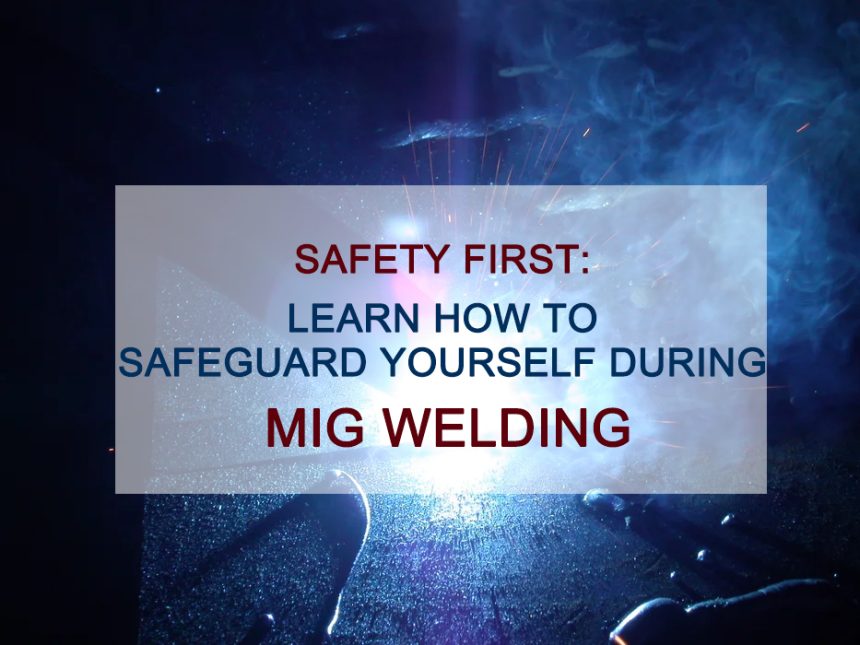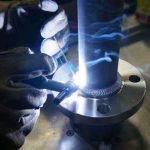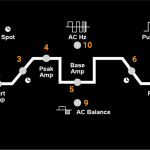In the realm of welding, numerous factors can jeopardize your health. It is crucial to be well-informed about the following key points:
Find out some of the ways welding can damage your health or kill you, and how you can protect yourself.
Welding Town
- Shield Your Skin Against UV Light:
- Safeguard every inch of your skin from harmful UV light exposure.
- Temporary moments of closing your eyes will not suffice in preventing arc eye.
- Choose to operate in adequately ventilated areas, avoiding extraction fans that may disperse your shielding gas.
- Enhance Extraction for Safety:
- If your extraction setup is inadequate, it is advisable to wear a vapor mask to protect yourself from hazardous fumes.
- Ensure the absence of flammable materials in proximity, as welding and grinding sparks have the potential to travel considerable distances.
- Arc Eye Caution:
- MIG welding emits an intensely bright light that can lead to arc eye, a condition where the cornea suffers from burns caused by the arc’s intense flash.
- Even for individuals donning full face welding masks, reflected light can still cause arc eye, particularly when welding in rooms with white painted walls.
- Additionally, welder’s caps serve a purpose beyond spark protection.
- Metal Vapor and its Effects on Health:
- Engaging in MIG welding and angle grinding exposes you to potentially harmful metal vapors.
- Certain metal vapors, such as those from aluminum alloy and zinc coatings, possess toxic properties, leading to conditions like heavy metal poisoning.
- Prioritize the removal of zinc coatings from galvanized steel before welding, and ensure the utilization of a proper charcoal welding mask in zinc-rich environments.
- Fumes from flux cored gasless wire and ARC welding are also detrimental to health, with stainless steel emitting chromium and MIG/TIG arcs producing ozone.
- Consequently, it is essential to conduct welding operations in well-ventilated spaces.
- Protection from UV Light and Molten Metal:
- The intense UV content in MIG welding can result in severe sunburns.
- Wearing protective clothing that covers your arms and legs is paramount, and opting for thin, breathable attire is preferable over exposing bare skin in hot conditions.
- Welding gauntlets provide essential protection for hands and wrists, while wearing cotton overalls or clothing minimizes the risk of molten metal penetrating gaps and causing burns.
- Beware that welded metal retains heat for a considerable period; avoid handling hot metal without proper precautions.
- Fire Safety Measures:
- Molten metal and grinding sparks have the potential to travel several feet, posing a fire hazard.
- Conduct a thorough risk assessment of your surroundings, ensuring a tidy work area devoid of sawdust, paper, or plastic bags that could smolder and ignite.
- Flame detection might be challenging when viewing through a shade 10 visor; therefore, remain vigilant.
- After welding or grinding, monitor the workshop for lingering smoldering fires to prevent potential incidents.
- Keep a fire extinguisher, preferably CO2 type, near the workshop exit. A bucket of sand can serve as an additional fire containment measure.
- Angle Grinding Safety:
- Workshop tools produce high noise levels that can damage hearing. Always prioritize wearing ear protection when operating tools like grinders, hammers, or drills.
- Invest in high-quality goggles with impact-resistant lenses and without direct air breathing holes for adequate eye protection during grinding.
- Ensure sparks are directed away from your body while grinding to minimize the risk of injury.
- Be cautious of fire hazards associated with grinding dust, particularly the combination of aluminum and steel dust, which can burn intensely and act as a welding power source.
- Exercise Common Sense:
- Apply sound judgment and practical reasoning when engaging in welding activities.
- Note that this guide does not encompass all aspects of welding safety.
- Seek advice from welding professionals and experienced welders before initiating any welding projects.
- Additionally, please refer to the comprehensive disclaimer for further information.
If you are interested in TIG welding, check out: How to Weld A Beginner’s Guide to TIG Welding Applications(TIG).
Disclaimer: Welding and similar activities involve inherent risks, and this website does not substitute for professional training. The information presented on this website or forum has not undergone scrutiny by certified welders or specialists, and thus, it may contain inaccuracies. Statements made on the forum are opinions and should not be considered factual. Before acting upon any information obtained from this website, it is your responsibility to verify its accuracy.










